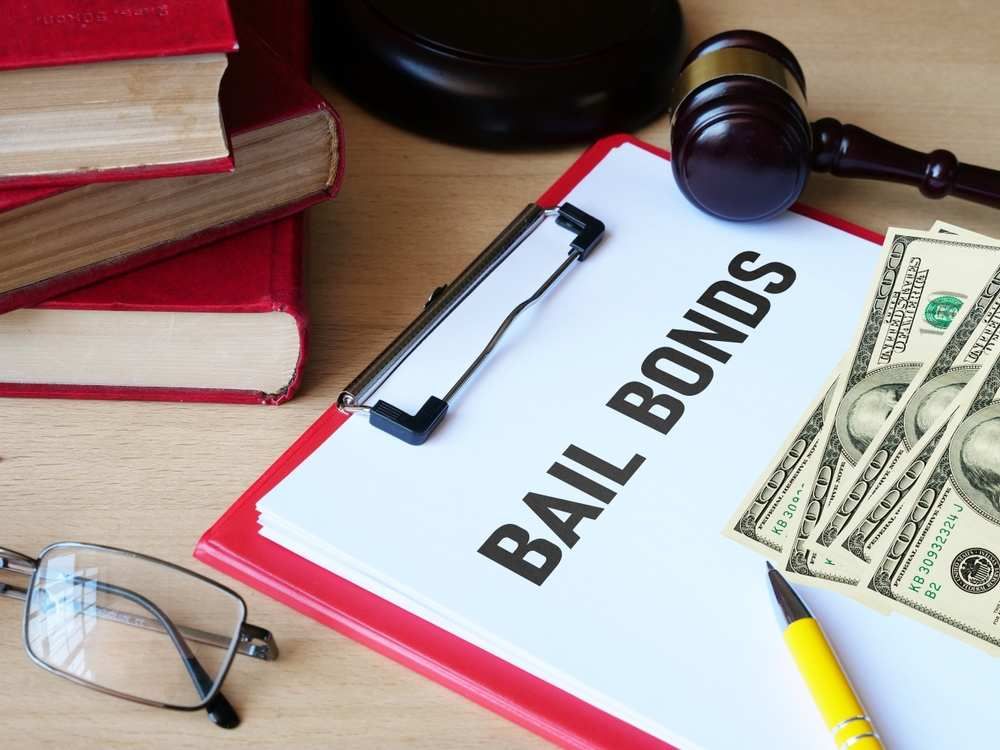Exactly How Bail Bonds Job: A Comprehensive Overview
Bail bonds play an essential role in the lawful procedure by offering a device for individuals to safeguard their release from guardianship while awaiting trial. Comprehending the intricacies of just how bail bonds operate, consisting of the functions of courts, bail bondsmensman, and the various costs entailed, can be vital for any person navigating this complex system. As we explore the different sorts of bail bonds and the elements that affect their expenses, it becomes evident that the obligations tied to these agreements prolong much past mere economic purchases. What effects do these obligations hold for defendants and their households?
What Are Bail Bonds?
Bail bonds are commonly used in the criminal justice system as a monetary assurance that a charged person will appear in court as required. When an individual is apprehended, a judge might establish a bail quantity based on various elements, consisting of the intensity of the infraction, the defendant's criminal background, and the danger of flight. If the implicated can not pay for the bail quantity, they might seek the help of a bondsman.
A bail bond is a contract between the accused, the bondsman, and the court, making sure that the defendant will fulfill their lawful obligations. In exchange for a fee, normally a portion of the overall bail amount, the bail bondsman supplies the court with a guaranty that ensures the bail. If the implicated falls short to show up in court, the bondsman is in charge of paying the full bail quantity to the court, which may lead them to seek the offender for recovery.
Bail bonds serve to assist in the release of people waiting for test, permitting them to maintain their work and family members obligations while making certain conformity with court looks. This system is important to stabilizing the legal rights of the charged with the rate of interests of public safety and security and judicial honesty.
The Bail Process Described
After understanding the function of bail bonds in the criminal justice system, it is essential to describe the bail procedure itself. The bail process begins when an individual is detained and collared. Following the apprehension, the accused is generally brought before a court for an initial hearing, where the court will identify whether to grant bail and set the amount.
If bail is approved, the accused has several alternatives to secure their release. They may pay the complete bail amount in cash money, which is returned upon the completion of their court responsibilities. Conversely, the accused can seek the support of a bondsman, who charges a non-refundable cost-- usually a percent of the overall bail amount-- to upload bail on their part.
As soon as bail is uploaded, the defendant is launched from protection with the understanding that they have to attend all arranged court appearances. Falling short to show up can cause the forfeiture of the bail and added lawful consequences. The procedure concludes when the case is fixed, at which point the bail is either returned or preserved by the bail bondsman as payment for their solutions.

Kinds Of Bail Bonds
When it comes to protecting a launch from custodianship through bail bonds,Numerous options exist. Recognizing the different types can help defendants and their families make educated options.
One of the most usual type is the guaranty bond, which involves a third-party bail bondsmansman who assures the complete bail amount to the court for a non-refundable fee, commonly around 10% of the bail amount. This choice is commonly made use of because of its accessibility for people that may not have the monetary ways to pay the complete bail upfront.
Another type is the money bond, where a co-signer or the offender pays the complete bail amount in money directly to the court. Upon successful completion of the case, the funds are refunded, minus any suitable charges.

Last but not least, migration bonds are specifically created for individuals detained by immigration authorities, promoting their launch while they await legal proceedings. Each kind of bail bond serves distinctive objectives, accommodating different situations and needs within the lawful system.
Factors Influencing Bail Prices
A number of vital variables affect the general cost of bail, determining how much a defendant or their household might need to spend for release. One of the key elements is the severity of the costs. Felony charges typically cause greater bail quantities compared to offenses as a result of the viewed threat of flight and the prospective repercussions find out here now of the crime.

Courts may consider an accused's income and possessions when figuring out bail, potentially leading to greater prices for those with greater monetary sources. If a bond bondsman regards a higher threat, they may establish a greater costs, more enhancing the expenses linked with safeguarding a bail bond.
Responsibilities of the Indemnitor
As soon as bail has been safeguarded, the obligations of the indemnitor, or the person who accepts back the bail bond, entered into play. The indemnitor is largely responsible for ensuring that the offender attends all set up court appearances. Failure to do so might cause the forfeiture of the bail bond and possible legal repercussions for the indemnitor.
In addition, the indemnitor is bound to pay off the bail bond company the full quantity of the bond if the offender fails to show up in court. This consists of any kind of charges or prices incurred by the bail representative in recuperating the defendant, which may further rise the monetary problem on the indemnitor.
The indemnitor has to likewise keep open communication with both the defendant and the bail bondsman, offering any kind of essential updates associated with the accused's circumstance. It is necessary for the indemnitor to stay knowledgeable about the lawful obligations and consequences connected with the bail bond, as ignorance may cause unplanned liabilities.
Final Thought
In recap, bail bonds act as a look here vital mechanism within the criminal justice system, promoting the release of accuseds while guaranteeing their look in court. Recognizing the numerous sorts of bail bonds, the complexities of the bail procedure, and the factors affecting bail costs is essential for see here now navigating this facility landscape. In addition, awareness of the obligations birthed by the indemnitor highlights the value of notified decision-making when engaging with bail bond solutions.
Recognizing the ins and outs of how bail bonds function, including the roles of courts, bail bondsmen, and the different fees involved, can be crucial for any individual navigating this complex system.After comprehending the function of bail bonds in the criminal justice system, it is essential to detail the bail procedure itself. The defendant can seek the help of a bond bondsman, who charges a non-refundable fee-- typically a percent of the total bail quantity-- to post bail on their behalf.
If a bond bondsman perceives a greater risk, they might establish a higher premium, more increasing the prices connected with securing a bail bond. Recognizing the different types of bail bonds, the complexities of the bail procedure, and the factors influencing bail prices is crucial for navigating this complex landscape.